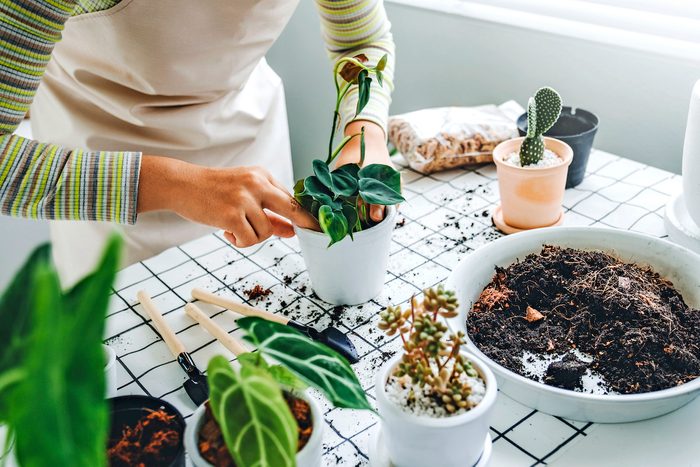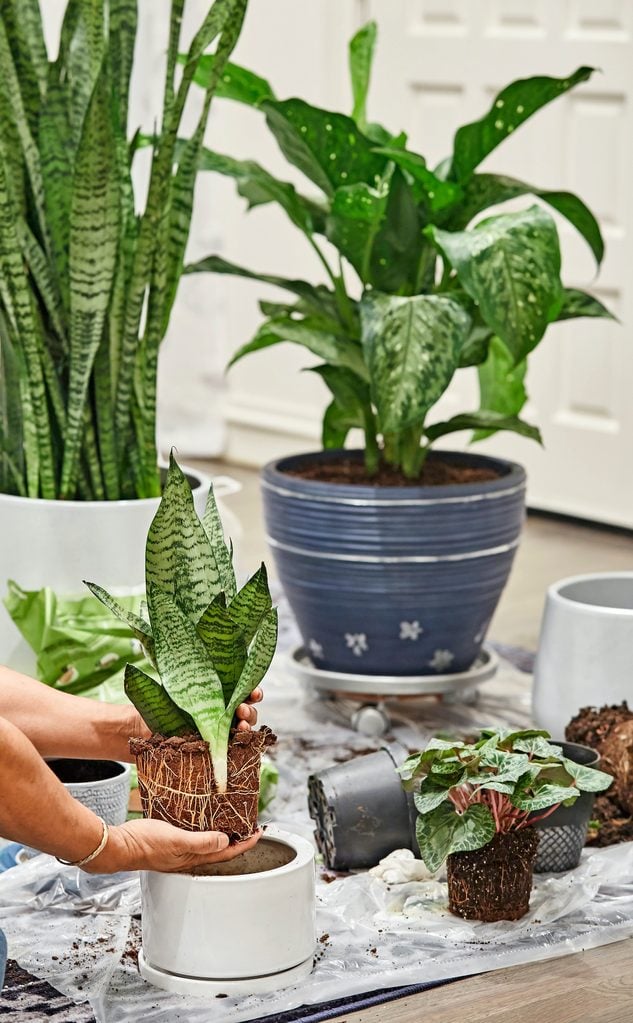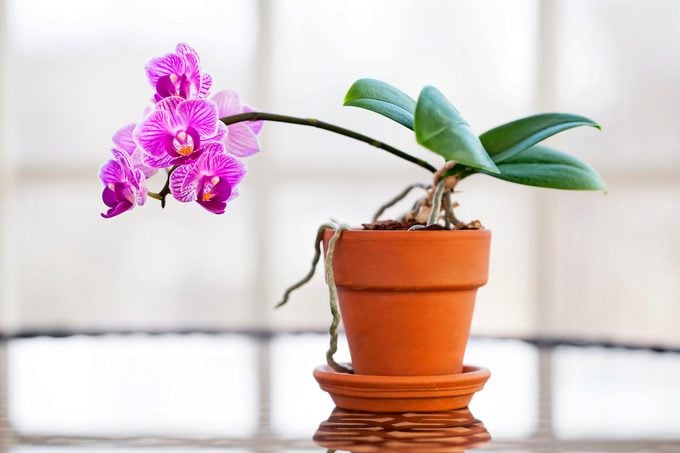How to Repot Orchids and Other Indoor Plants
Updated: Dec. 12, 2022

Wondering how to repot a plant? It's not difficult! With these expert tips, you can give your indoor plants and orchids new homes in no time at all.
Our editors and experts handpick every product we feature. We may earn a commission from your purchases.
When your favorite houseplant is bursting at the seams of its pot, it’s time for a big move with big perks. Erin Marino of thesill.com says repotting has two main benefits: “It provides your plant with fresh potting mix and more space to grow.” Here’s how to repot an indoor plant; use Erin’s easy tips to provide your plant with a new home. Plus get specific advice for repotting orchids.
How Often Should You Repot Indoor Plants?
Smaller plants need a refresh about every one to two years, though Erin notes that larger or slower-growing plants, such as ficus trees and cactuses, can sometimes go as long as three years.
Once you’ve learned how to repot a plant, discover how to water your indoor plants the right way.
Signs That Your Plant Needs Repotting
The most obvious clues that it’s time to repot are roots coming through the drainage holes or pushing the plant up and out of the pot. If your container no longer seems to hold much water or if the plant stops growing in its non-dormant season, it’s probably time for a change too.
Already mastered repotting plants? Get more indoor-plant indoor plant growing tips from real gardeners.
How to Choose the Right Size Pot

“It may be tempting to opt for a big pot, but don’t!” says Erin. “The larger the planter, the more water we tend to give it. This can very easily lead to overwatering, which causes root rot.” Choose a container slightly larger than your current setup—up to 2 inches wider in diameter for smaller plants. Only slightly increase the size of the pot when replanting houseplants such as snake plants. Always make sure your pot has adequate drainage holes.
We think you’ll love these unique succulent pots and planters.
Always Use New Potting Mix
Plants slowly use up the nutrients in potting mix and need new soil to thrive. Use new soil when moving a plant from pot to pot.
Learn how to get rid of indoor plant bugs.
Simple Steps for Repotting Indoor Plants
- Turn your plant sideways and gently hold it by the stems or leaves. Tap the bottom of the pot until the plant slides out.
- Loosen the roots with your fingers. Prune off any extra long, threadlike roots and unbind the roots growing in tight circles.
- Add a shallow layer of potting mix. Settle your plant so its crown sits at the same level and fill with more soil. Don’t pack it too tightly, because you want the roots to have plenty of room to breathe.
- Water your container thoroughly and ensure it drains properly. Do not apply fertilizers now. “That would be nutrient overload,” Erin says. Now your houseplants are ready to spread their roots and keep on growing.
Check out 15 indoor plant stand options for every houseplant.
How to Repot Orchids

Tropical orchids are popular, long-lasting, blooming houseplants. They’re easy to move into a new pot if you keep these orchid repotting tips in mind.
- Use only orchid-specific potting mix.
- Wait until the blooms are spent before moving.
- Avoid breaking the roots, but prune any blackened ones with sterilized pruning snips.
- Use support clips to steady the orchid if the new lightly packed soil doesn’t hold it in place.
Next, learn how to tell if your jade plant needs repotting.



















